Bread knife
V 2016.0033 (adjustable) L=29,5cm WD=5,5cm WT=137gr. Inscription: DIOGENES HERDER UND SOHN STAINLESS SOLINGEN GERMANY
Knife with a fairly rigid, straight and long (approx. 20-30 cm) blade, so that even large breads can be cut. You can also cut a cake horizontally with it to spread a layer of whipped cream, pudding, etc.
The bread was often cut on the breast, so with the cut towards you. That's why bread knives were made with a hook-shaped handle so that the hand would not slip. In order to be able to exert a greater force with less effort, knives were also made with a support for the forearm (1) or with loose supports through which the blade protruded. There is also a more or less sickle-shaped bread knife with a smooth edge that was also used on the chest.
The cut can be smooth, wavy (2) or serrated (see also frozen-food knife knife and snow saw). With teeth it is easier to get through the crust. There are also bread knives that have a cut on both sides, eg one wavy and one with teeth.
To facilitate regular cutting, guides were made that could be attached to the blade of any knife and knives with built-in guides.
In the past, the bread knife was often the only large knife that people had in the house. It was therefore used for anything and everything. (3)
See also beet topper. [MOT]
(1) See WEYNS 1974: 555
(2) In this case, it would be very similar to the cake knife, whose waves are wider (CAMPBELL FRANKLIN: 28); similar knives are now also being made to cut "insulation softboard" (DICK Catalogus 2000-2001: 11.10-11).
(3) See the article Gesneden brood. Een kleine geschiedenis van het broodmes en de broodsnijmachine, Ina Ruckebusch en Steven De Waele in Patakon. Tijdschrift over bakerfgoed, 6 (2015) 2, p. 26-31.
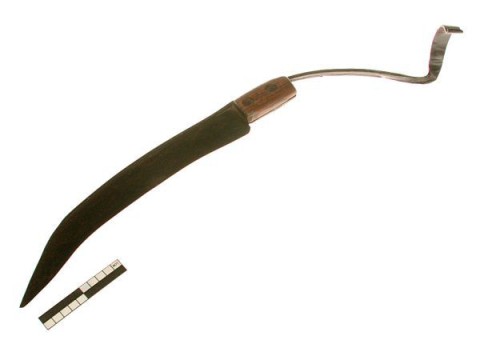
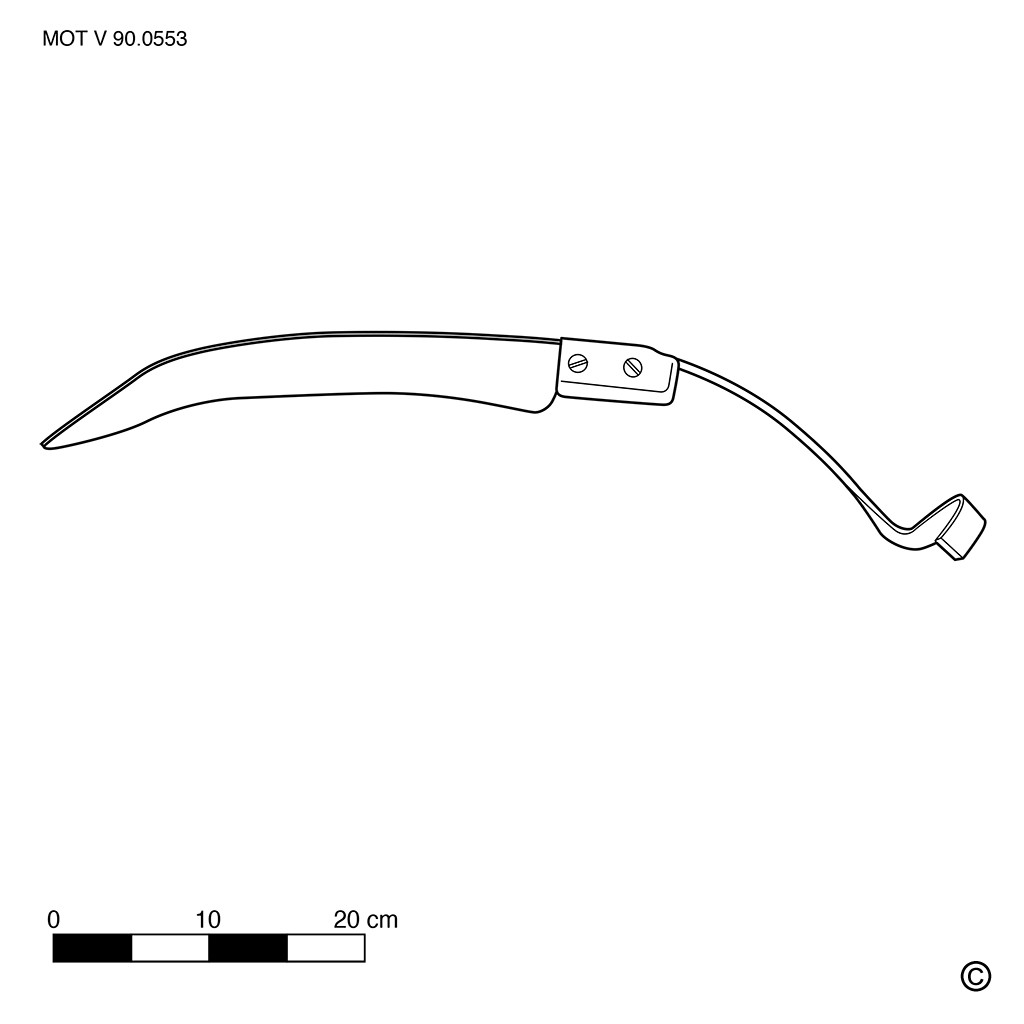
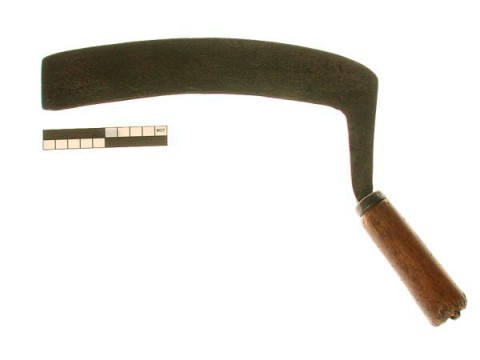
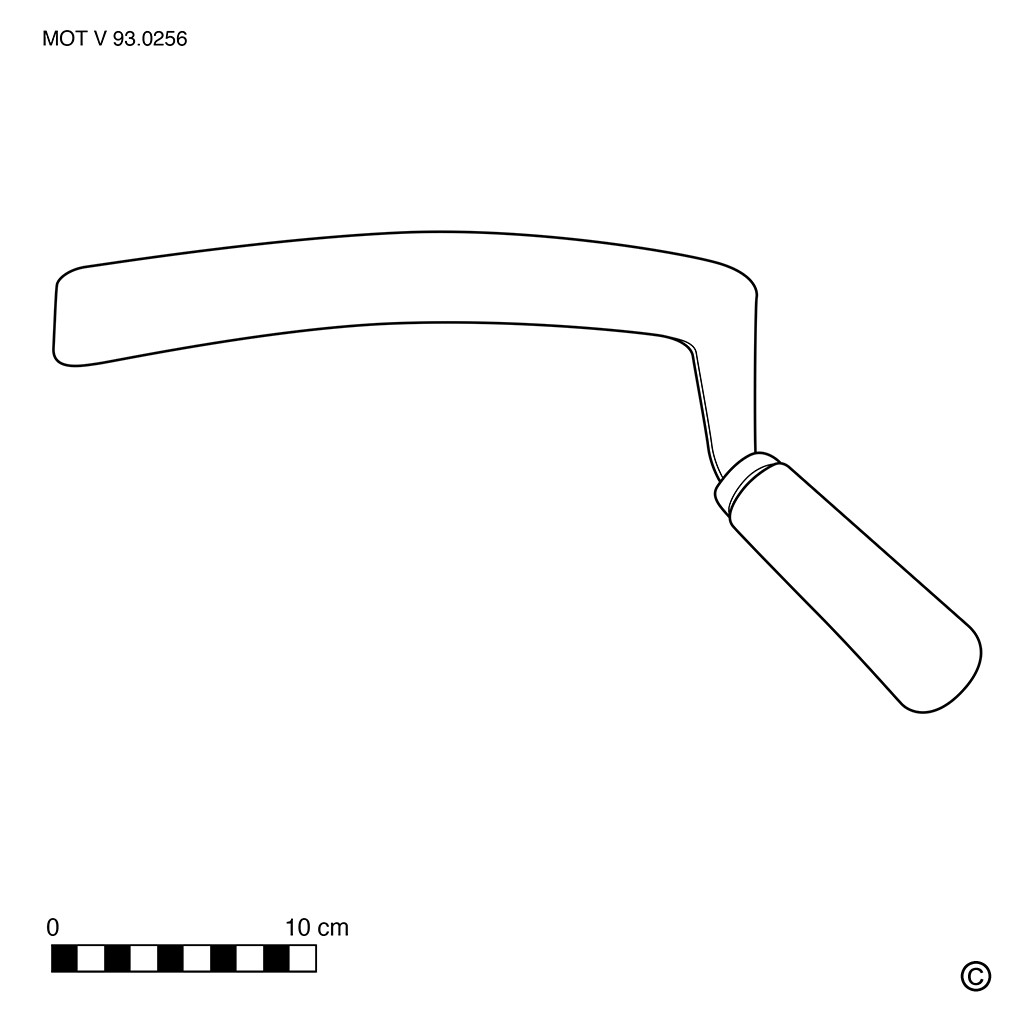
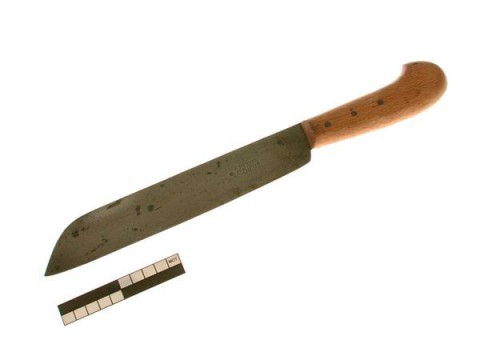
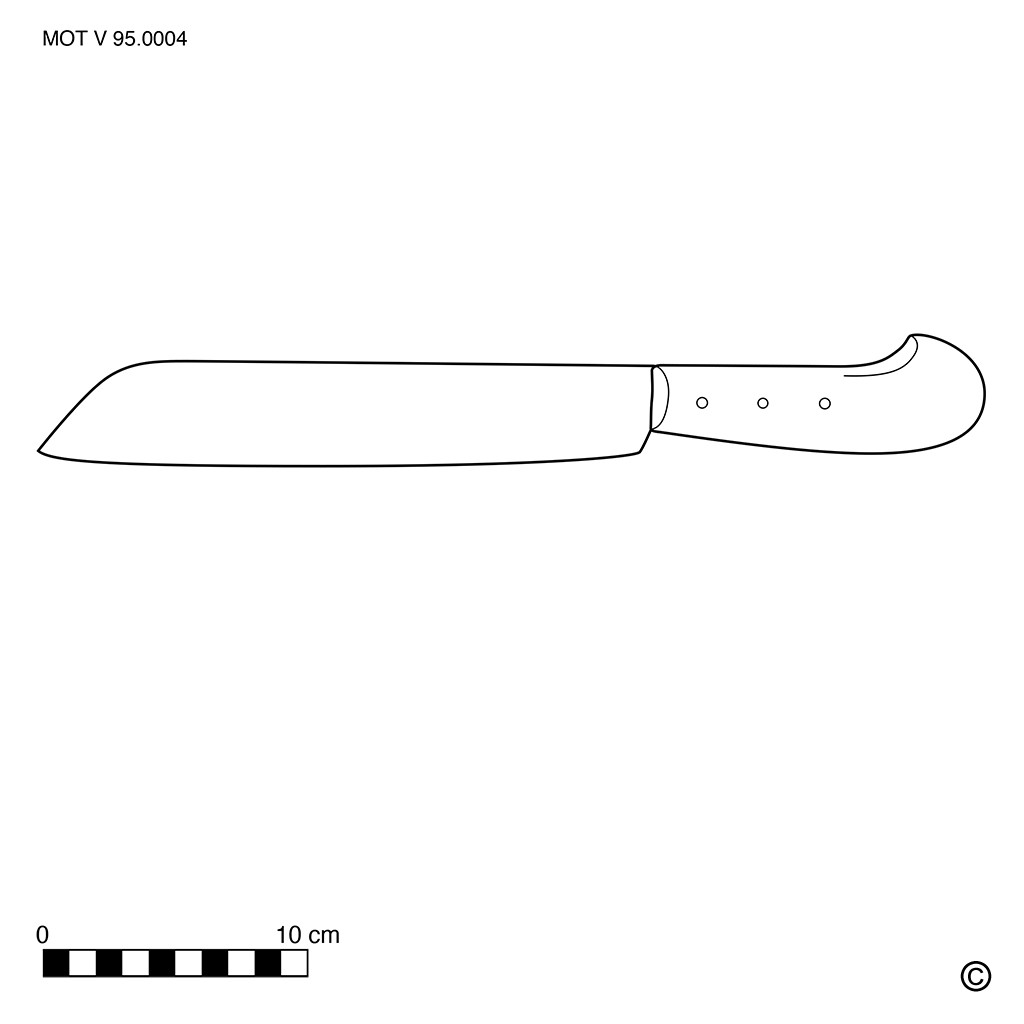
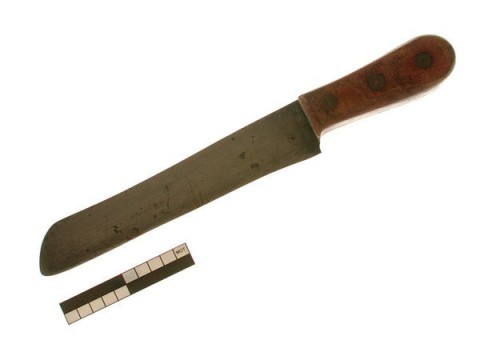
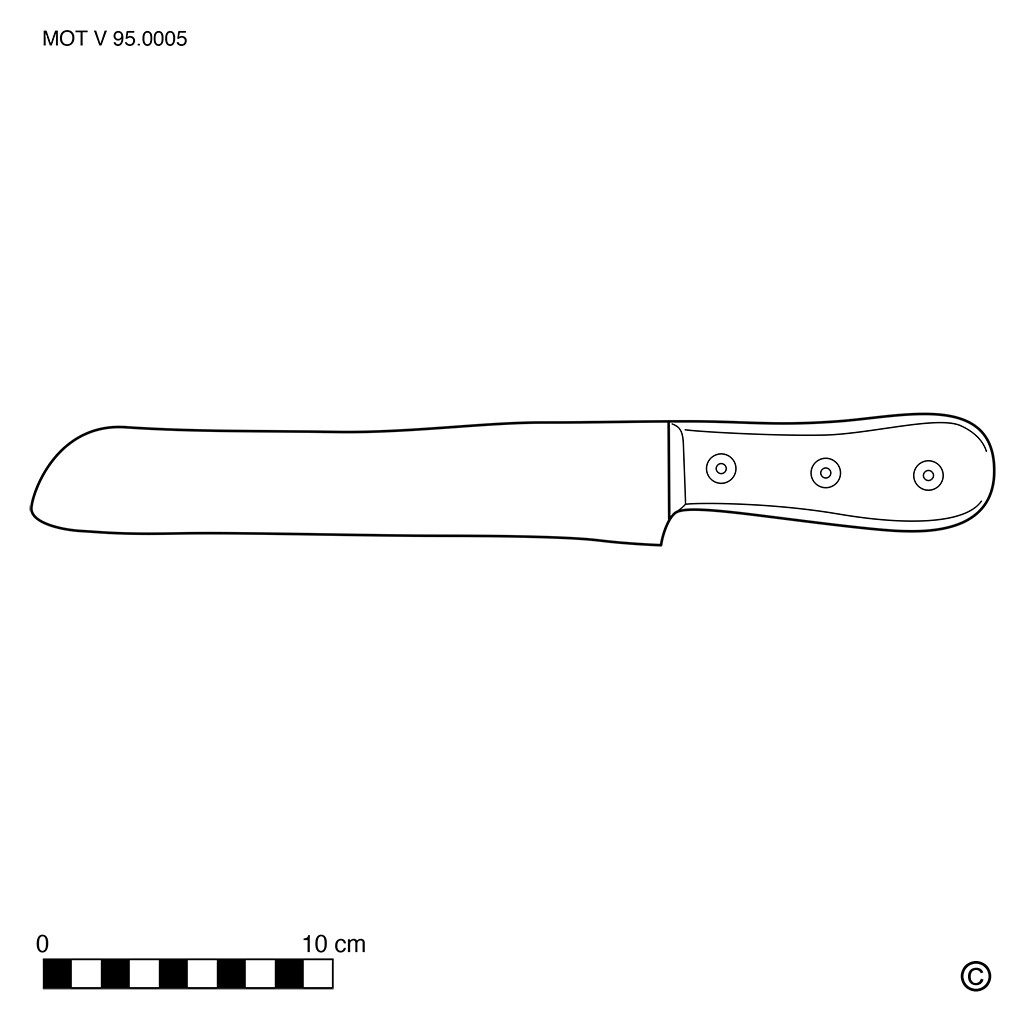
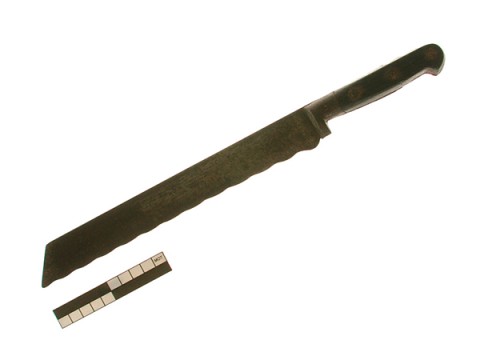
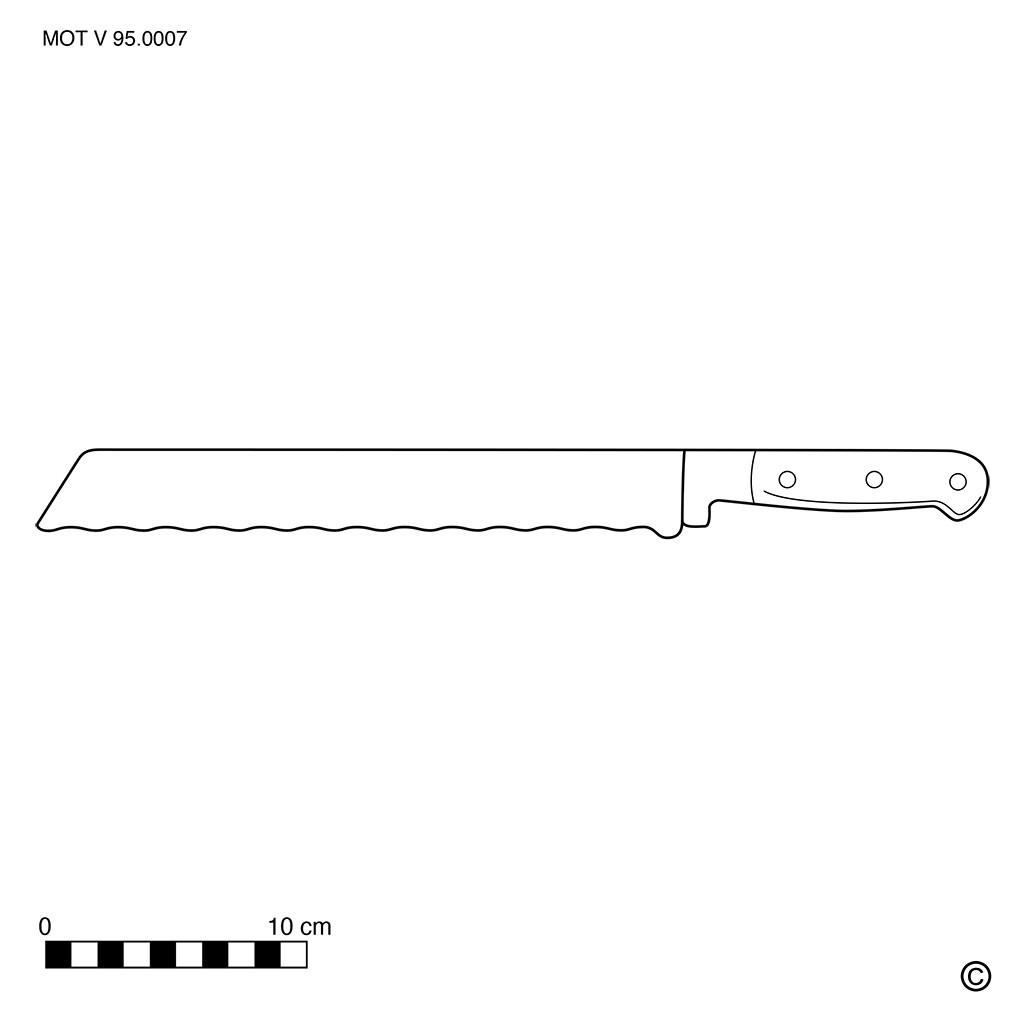
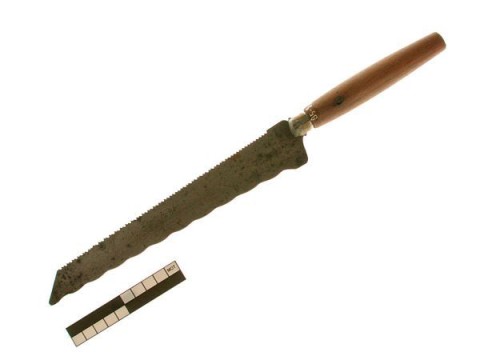
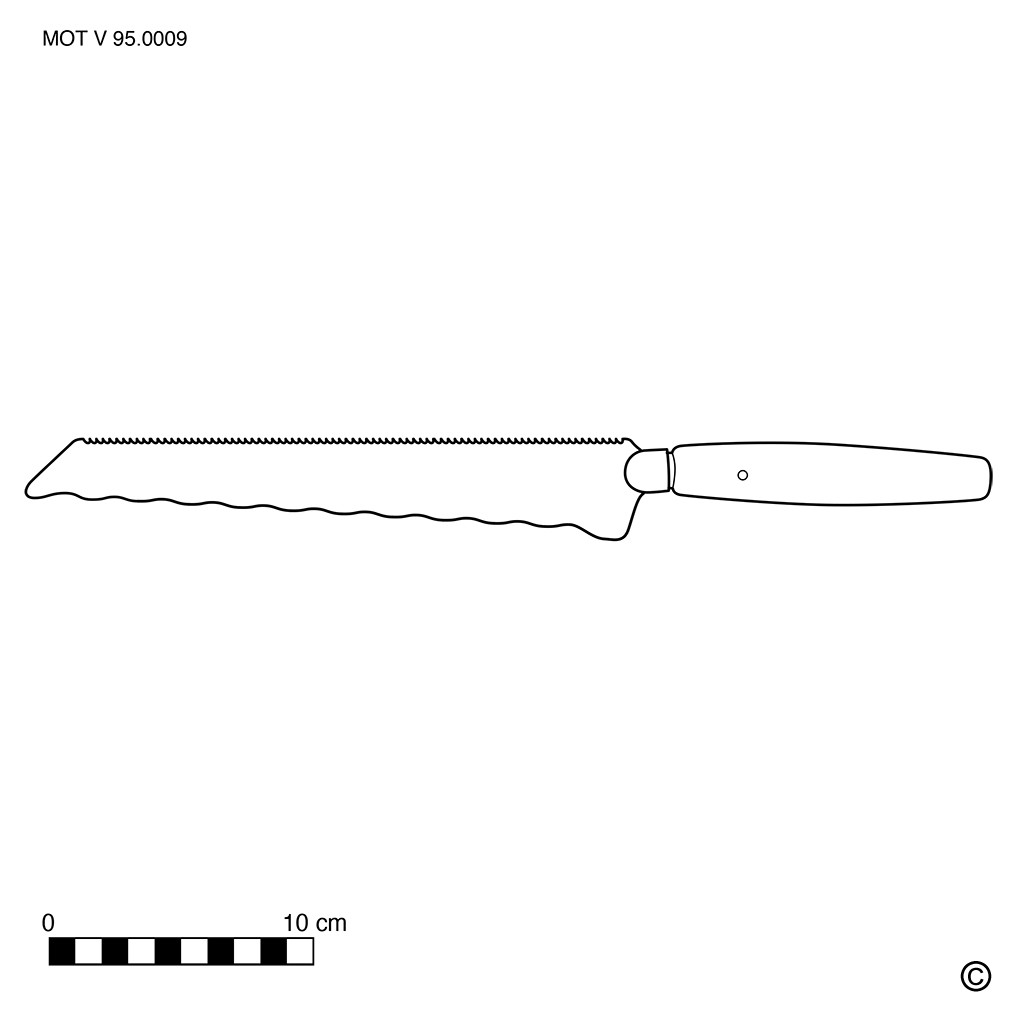
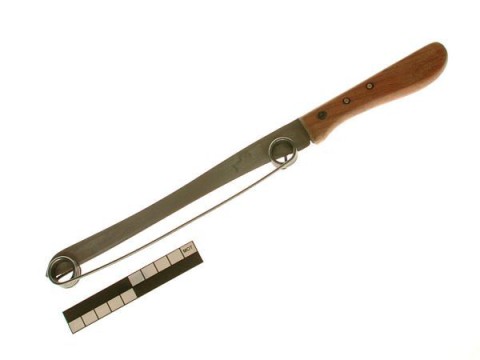
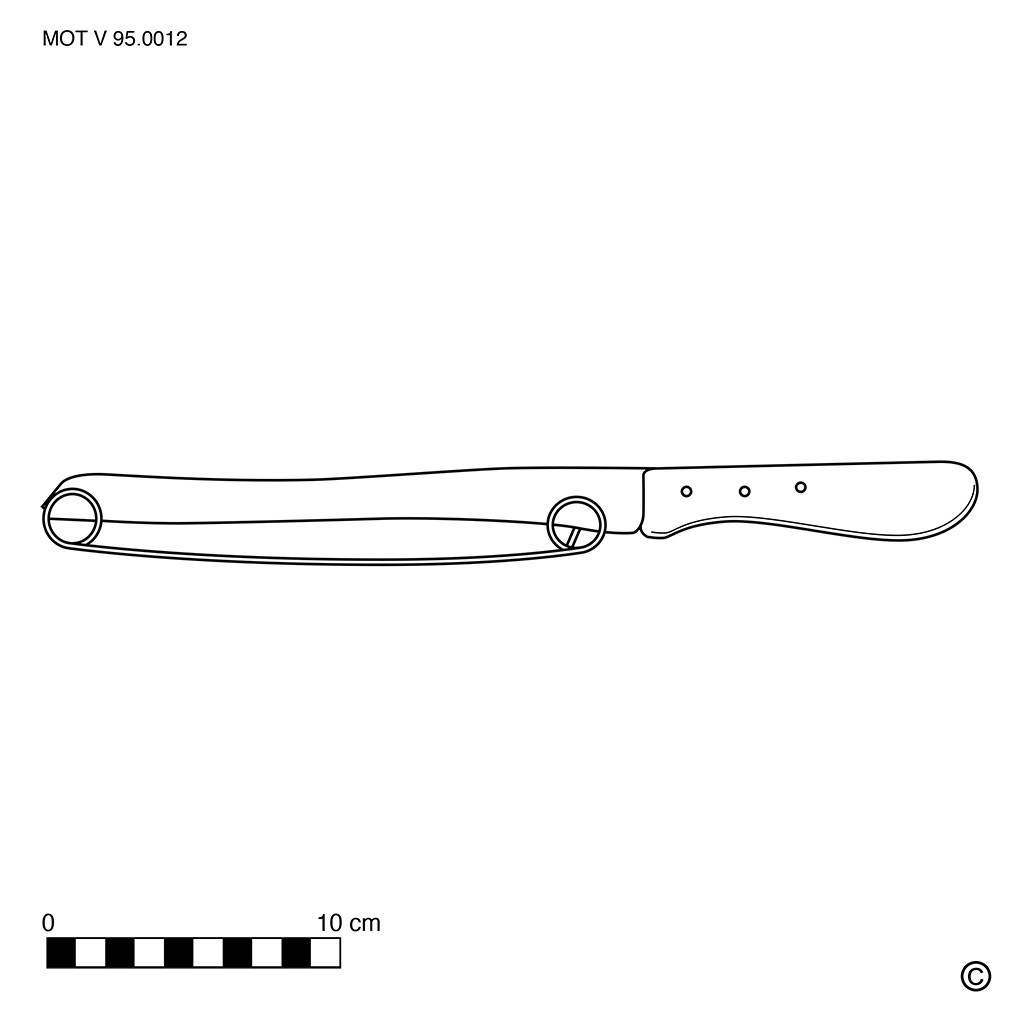
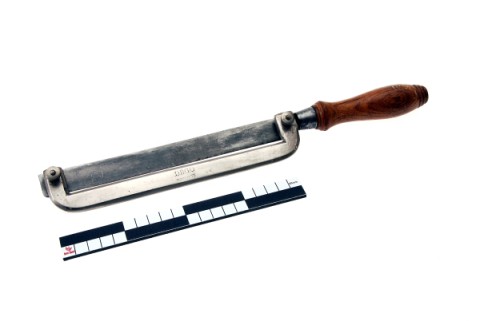
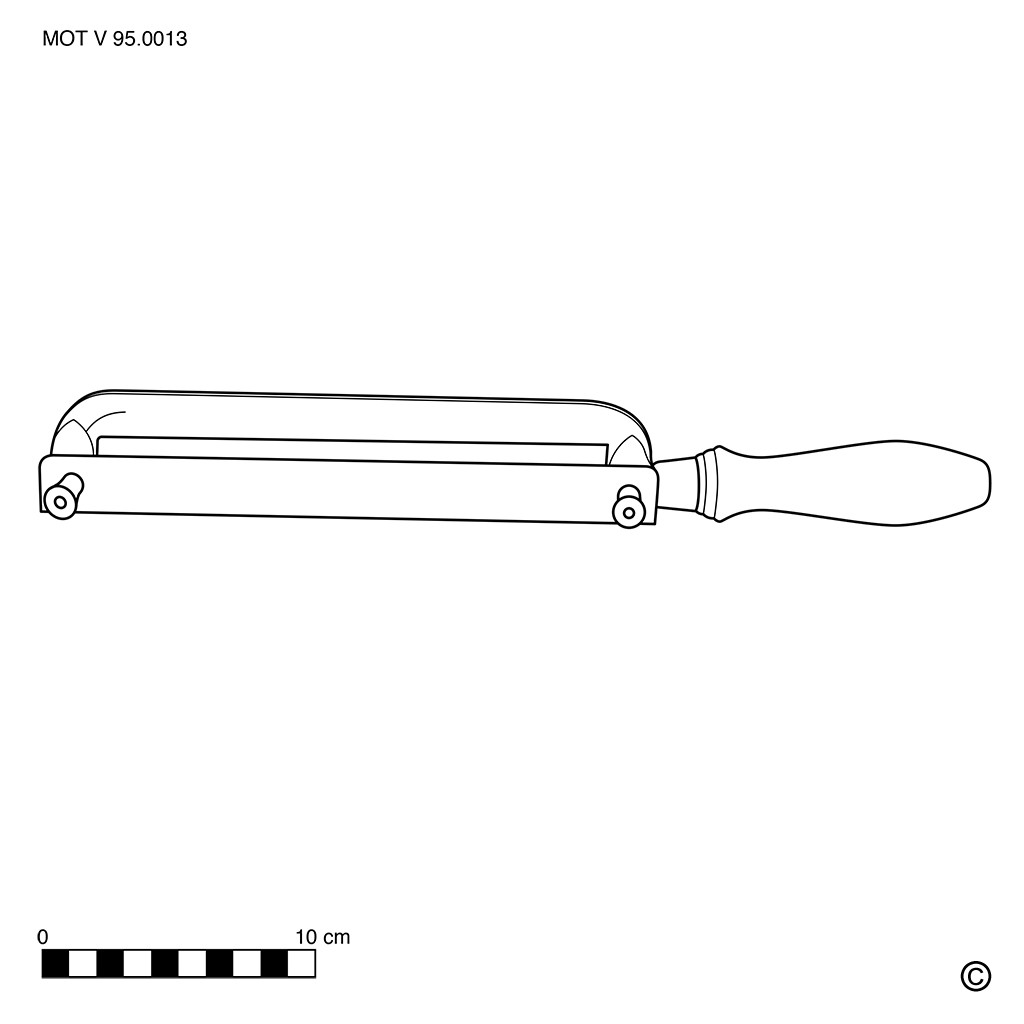
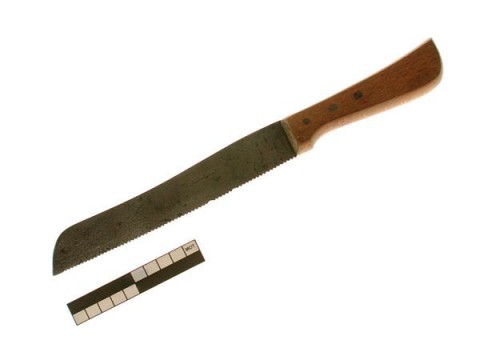
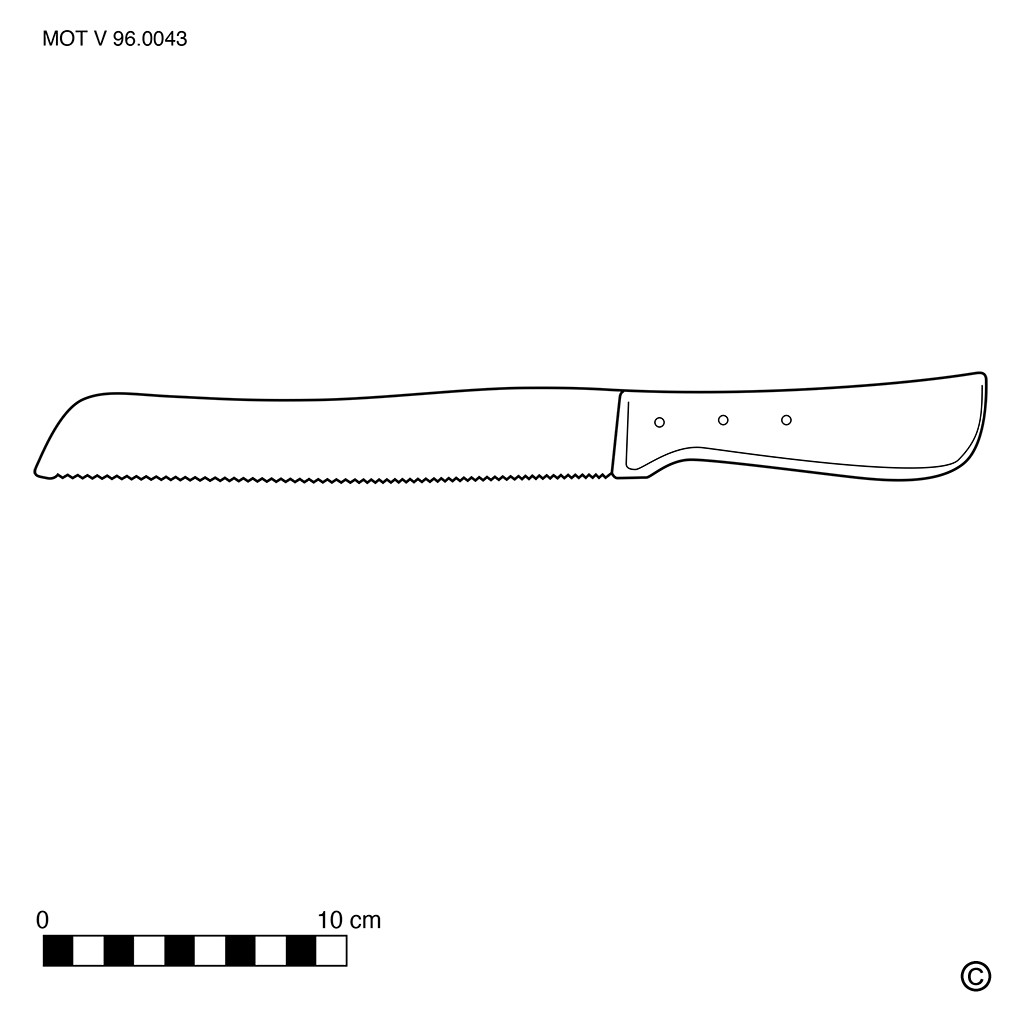
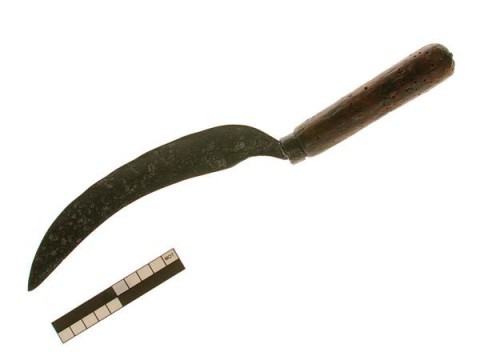
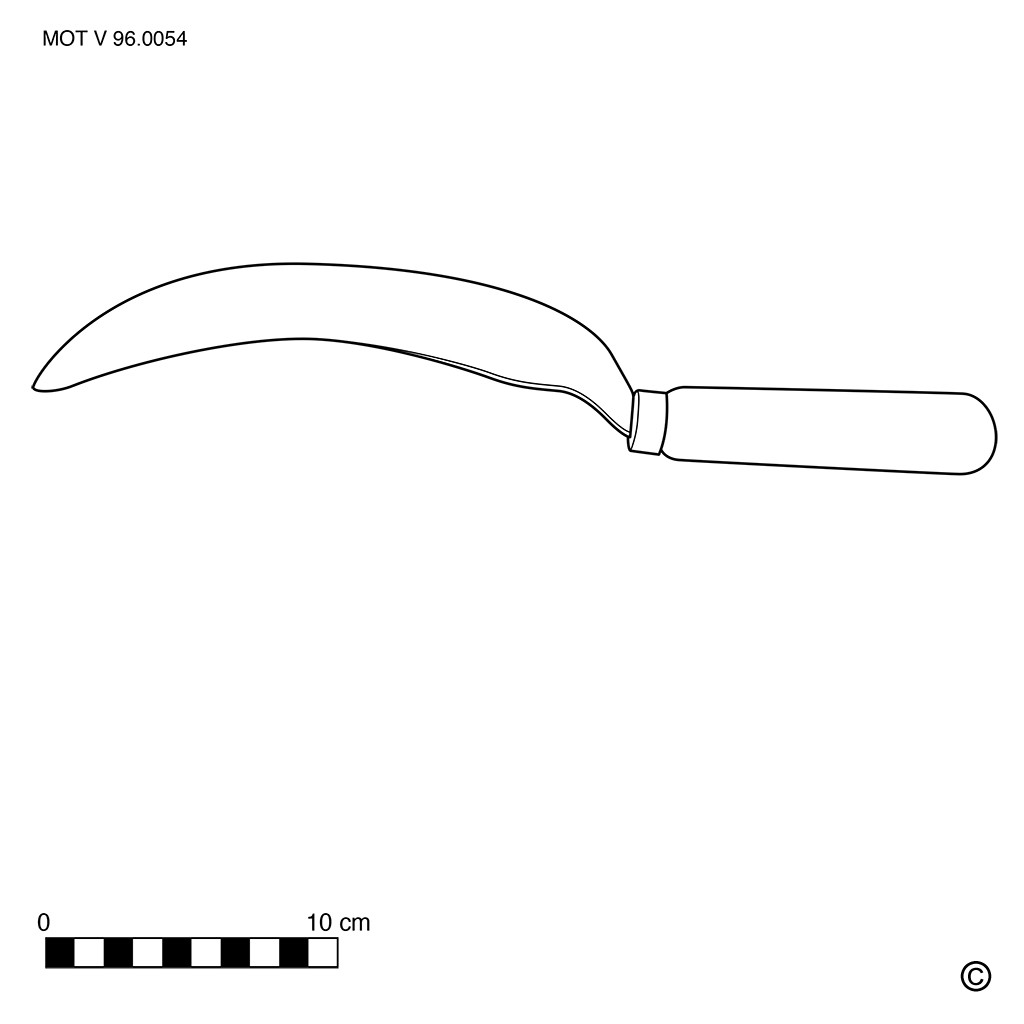
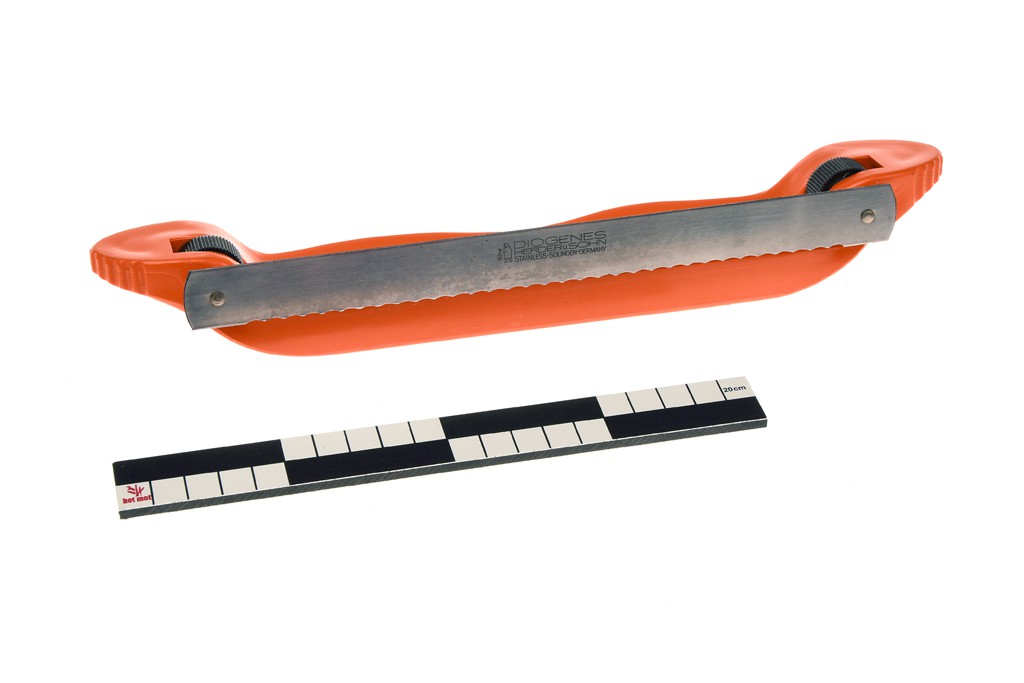
MOT V 2016.0033
